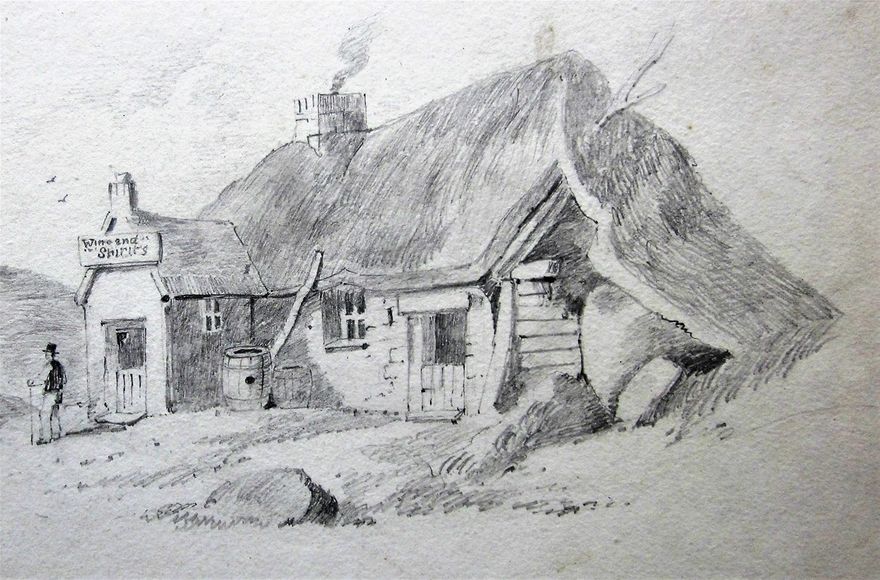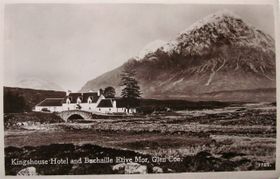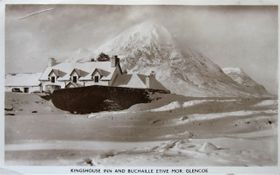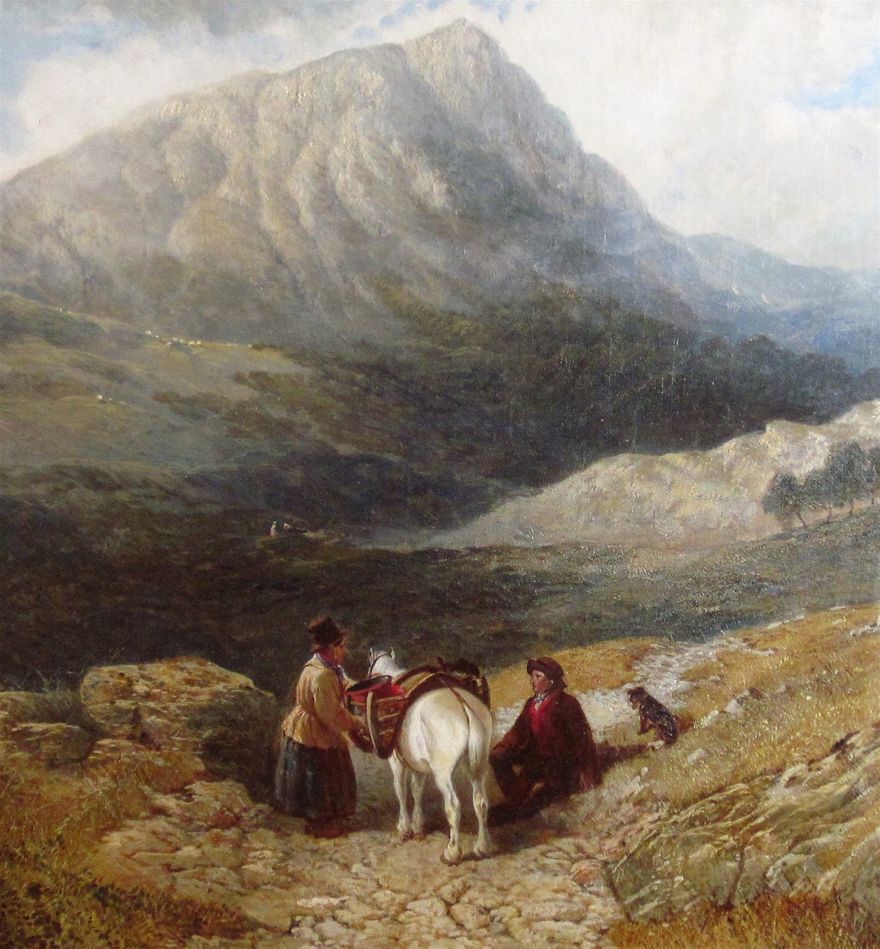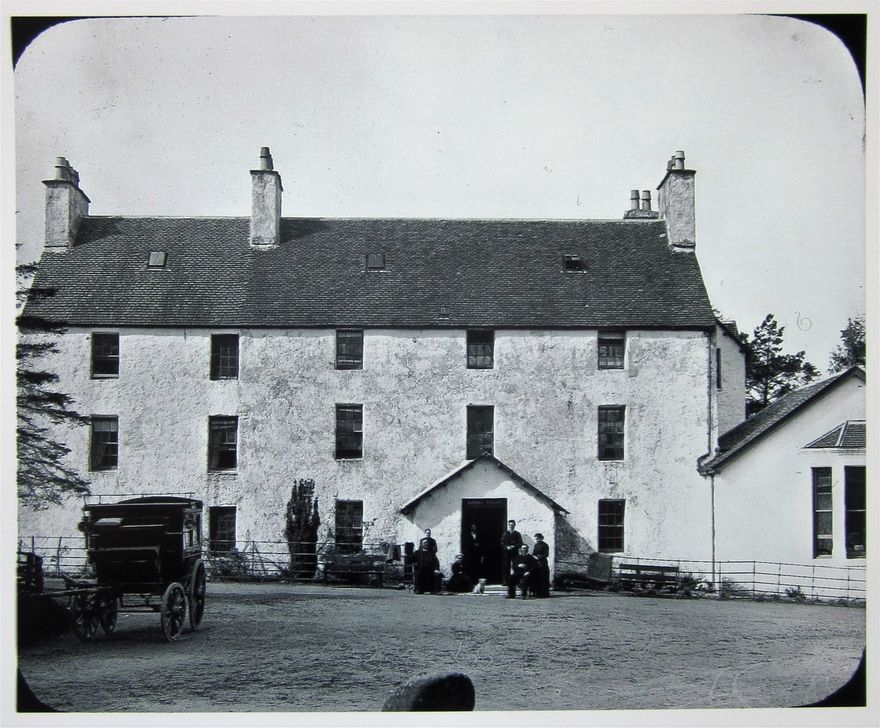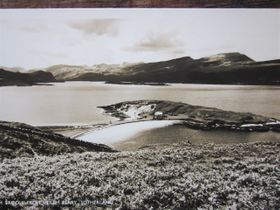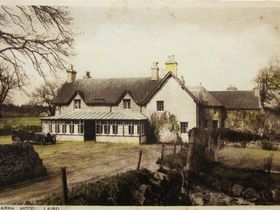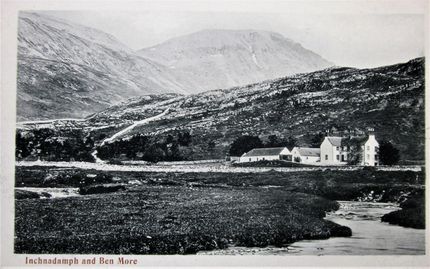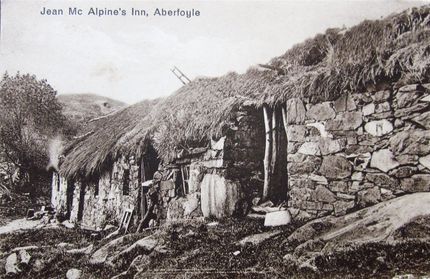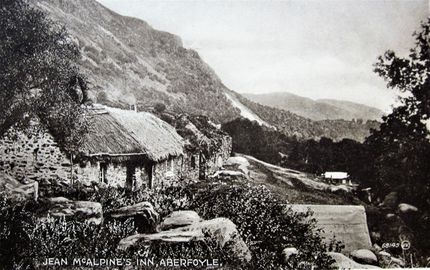Highland Inns: "where you must be content to take what you find."
A Highland Inn. A 19th century sketch by an unknown artist.
"The Scots have not Inns, but Change-Houses as they call them, poor small cottages where you must be content to take what you find." So wrote Thomas Kirk in 1669. My research into Highland travel has revealed that visitors into the far north had to 'take what they found' well into the 19th century. As late as 1837, the Penny Magazine advised that "those who are fastidious have no business off the high road north of Inverness", warning of "the extreme badness of accommodation which generally prevails" and finding "a perfect plague of fleas... throughout the north-western part of Inverness-shire and Ross-shire."
The Anderson brothers, in their important Guide to the Highlands... took a more postive approach, suggesting that by 1842, the "state of inns...is now almost universally pretty good, in many instances excellent", and that any failings the traveller encounters can be offset by the "unexpected savoir vivre he will meet with." But they do warn of the "tardiness of the attendance"
What was certainly needed in visitors to these parts was a positive attitude, as exemplified by, for example, William Daniell near Strathnaver in Sutherland, where"the accommodations were few, and the inconveniences numerous, but fatigue rendered them tolerable, and sound sleep buried them into oblivion." Whilst Mendelssohn in 1829 found these 'inconveniences' difficult - "the room is large and empty, from one end of the walls, the wet trickles down...doors are banging, window shutters are bursting open...." his companion, Klingemann, was more forgiving: "if a fowl chances to run about the room, or a pig squeaks under you, it is proof that you may look forward to new-laid eggs and some pork at breakfast."
Earlier, the two Europeans whose travel account is published in Norman Scarfe's To the Highlands in 1786... (Boydell 2001) displayed similar spirit when they were staying at the General's Hut, a much-visited inn at Foyers where General Wade was said to have made his headquarters when directing his road construction scheme in the Highlands. Alexandre de la Rochefoucauld and his companion were horrified to discover that the whole family running the inn had scabies, which put them off the oatcakes which had been prepared with their diseased hands. "I daresay this description may make you feel sorry for us," he writes, "but good travellers feel challenged rather than discouraged when they are exploring enthralled."
Thr Reverend James Hall encountered exactly the same problem at the General's Hut some 20 years later, and its lonely location meant that it was inevitably visited by anyone travelling in the district. Other assessments of the Inn are a little conflicting: some thirty years earlier, Dr Johnson had found it "not ill-stocked with provisions", but in 1799, the Honourable Sarah Murray peeped in, and finding it "not very inviting", chose to eat a dinner of her own making in her chaise. Henry Skrine had done likewise on his tour in 1793: "the aspect of the place [the General's Hut] was wretched....we were obliged to eat the dinner we had brought with us from Inverness in a room without furniture or ceiling, and open at the roof to every attack of the weather." Thomas Garnett in 1800 was impressed by the landlord who took him to the Falls of Foyer, and who, after then looking after the horses, commenced to cook. By 1837, the Penny Magazine referred to it as "a better public house."
Another Inn in a key position was the Kings House.
The Kingshouse Hotel, a vintage postcard by J.B. White.
Built sometime in the 18th century, it occupies a magnificent position beneath Buchaille Etive Mor, Glencoe. It was a key destination for travellers wishing to cross Rannoch Moor, and venture into Glencoe.
A postcard dating from the 1930s.
Unfortunately, the magnificence of its position does not seem to have been matched by the magnificence of its service. James Hall called it "a miserable, dirty hut, though the landlord has this with some pasture land, rent-free, besides £10 per annum from government." He adds "here, provisions were as scarce and poor as at the General's Hut."
Dorothy Wordsworth had even more to say about the King's House: "Never did I see such a miserable, such a wretched place" She was greeted by "a woman, seemingly about 40 years old, [who] came to us in a great bustle, screaming in Erse with the most horrible guinea-hen or peacock voice I ever heard," though Dorothy admits "the woman was civil, in her fierce, wild way." However, "she had no eggs, no milk, no potatoes, no loaf-bread" and supper consisted of "a shoulder of mutton so hard that it was impossible to chew the little flesh that might be scraped off the bones, and some sorry soup made of barley and water, for it had no other taste." The sheets they were given were still damp, but the fire was too miserable to have any effect on them. Dorothy struggled more than most throughout the Highlands with the standards of cleanliness, and the quality of the various inns at which she stayed, but she leaves a nice picture of Glencoe as she looks out of the window at the King's House:
She saw "the huge pyramidal mountain [Buchaille Etive Mor] at the entrance of Glen Coe. All between, the dreary waste was clear, almost, as sky, the moon shining full on it. A rivulet ran amongst stones near the house, and sparkled with light. I could have fancied that there was nothing else in that extensive circuit over which we looked, that had the power of motion."
Travellers in Glencoe. A fine oil original painting, artist unknown. In my collection.
Other inns come in for criticism, not least that at Fort William. Garnett in 1800 found it "wretched beyond anything we had met with." His bed was so uncomfortable that he had to get up at 3.00 a.m.. He added, "I am ashamed to say that the inn was kept by an Englishman." Forty years later, Catherine Sinclair was in agreement: "...we entered one of the worst inns I ever yet encountered. Our host...seemed to think...that a story would compensate for the want of a dinner...After a short but comfortless sejour at Fort William, we enjoyed the only pleasure that the inn there can afford to travellers, and that is, to get away."
Robert Southey stayed at Fort William with Thomas Telford when he was observing the road and canal improvements in 1819. Again, it gets a poor appraisal, the pair finding it "abominably dirty", but on leaving the hotel on September 22nd., when "Mr Telford paid the bill, he gave the poor girl who had been waiter, chambermaid, and probably cook-in-chief also, a twenty shillings bill. I shall never forget the expression of her countenance and her eyes when she understood that it was for herself."
When back in England, at Longtown near Carlisle, Southey's party were delighted with the cleanliness of their hotel, "appearing to great advantage after the inns of Scotland." However, he was less impressed when he learned that Telford had been charged 4d for reading the newspaper!
A fine 19th century photograph of the inn at Dalmally. Possibly the one Faujas St Fond reached after a 'melancholy' journey from Inveraray in 1784. He was impressed by its "elegance in so desert a place'. [For more on Faujas's journey see my book, Chapter 7.]
The inn at Heilem was one of those built by the Duke of Sutherland. It can still be seen on Ard Neakie, the Duke's coat-of-arms just visible above the door.
The inns of the far north are mentioned in some accounts, though expectation was probably not high. That at Heilem on Loch Eriboll was described as "Basic" in Black's Guides which began to appear in the 1840s, but the Andersons thought it "a good inn" and Charles St John, "clean enough." The inn at Durine [Durness] was said to be "small...and inferior to Rispond", while Anderson thought the inn at 'Aultnaharrow' [Altnaharra] "an admirable one".
The hotel at Altnaharra. An early 20th century postcard.
The inn at Inchnadamph, with Ben More Assynt rising behind it. The hotel beacme a shrine for geologists after Peach and Horne stayed there when surveying the area following the conclusion of the Highlands Controversy. This is a G.W. Wilson image.
Charles St John found the inn at Inchnadamph "comfortable [and] clean [with] an obliging landlord." He states that the "Good Duke" of Sutherland allows the landlords of the inns to be housed rent-free, and they "have other advantages in hiring their land...the consequences of which arrangement is that strangers can travel through this otherwise wild and lovely country with every facility and comfort, and without the disagreeable feeling of being doubly overcharged because they are strangers."
By the 1850s, the situation regarding accommodation was clearly improving everywhere, a far cry from the days of Johnson who was surprised at Bernera when a man leapt from the bed that he was supposed to occupy. In the end hay was found, on which he slept in his riding coat. "Mr Boswell, being more delicate, laid himself sheets with hay over and under him, and lay in linen like a gentleman." (John Knox). Strangers could be overcharged, as Hall found at Crieff, and also Garnett at Balnegarde. But having been charged "very exorbitantly", they declined to pay. "This is mentioned merely to show the impropriety of submitting to such charges on the road, whatever be the fortune or condition of the traveller, it being a bad example, and highly injurious to the community."
It wasn't just people who could be accommodated badly: horses, too could be cheated. The Reverend Hall recorded that Ostlers sometimes rubbed the mouth of a horse with tallow, "by which means, though your horse puts his mouth among the oats, and seems to eat, yet he can scarcely eat any, and when you are gone, thinking your horse has nearly finished what you gave him, Mr Ostler carries off your oats and too often converts them, as Swift says, into brandy!"
On Skye, John macCulloch had much to say about the 'hospitality' offered by Mr and Mrs Nicholson. He was charged 6/- per day for having his horse cared for: "What business," he asks ironically, "I had to leave my horse with him so long, to eat up all people's grass? In fact, poor Roger {his horse] had been turned loose on the sea shore to pick up what he could."
I shall leave the last words on Scottish Inns to Catherine Sinclair, writing of the inn at Cluny:
"...on all the plates at dinner, these words were inscribed: 'Life is short, so spend it well.' Certainly, no one will spend more of it than they can help here, as the very necessities are luxuries unattainable at any price: my bed was a mere hole in the wall, our dinner consisted of real buttered eggs with very salt ham, and we had not even the consolation of being angry at their many deficiencies, as the poor people were so perfectly civil and well-meaning."
At Drumnadrochit, on the other hand, they enjoyed an "excellent dinner...a roast joint, the only fresh pastry I almost ever saw in travelling...and the most elaborately fanciful dish of potatoes I ever saw, being tasefully turned out, like a shape of blanc-mange, with a pattern of grapes and vine leaves on top, which might have done for a marble chimney-piece."
As Thomas Kirk said in 1669 "you must be content to take what you find."
"Jean McAlpine's Inn Aberfoyle." An early 20th century photograph of the inn with associations to Sir Walter Scott in 'Rob Roy.'
Another view of Jean McAlpine's Inn, this a valentine photograph of 1911.
For more details on Highland Inns, please see my page titled "Travellers' Accounts: a selection."
